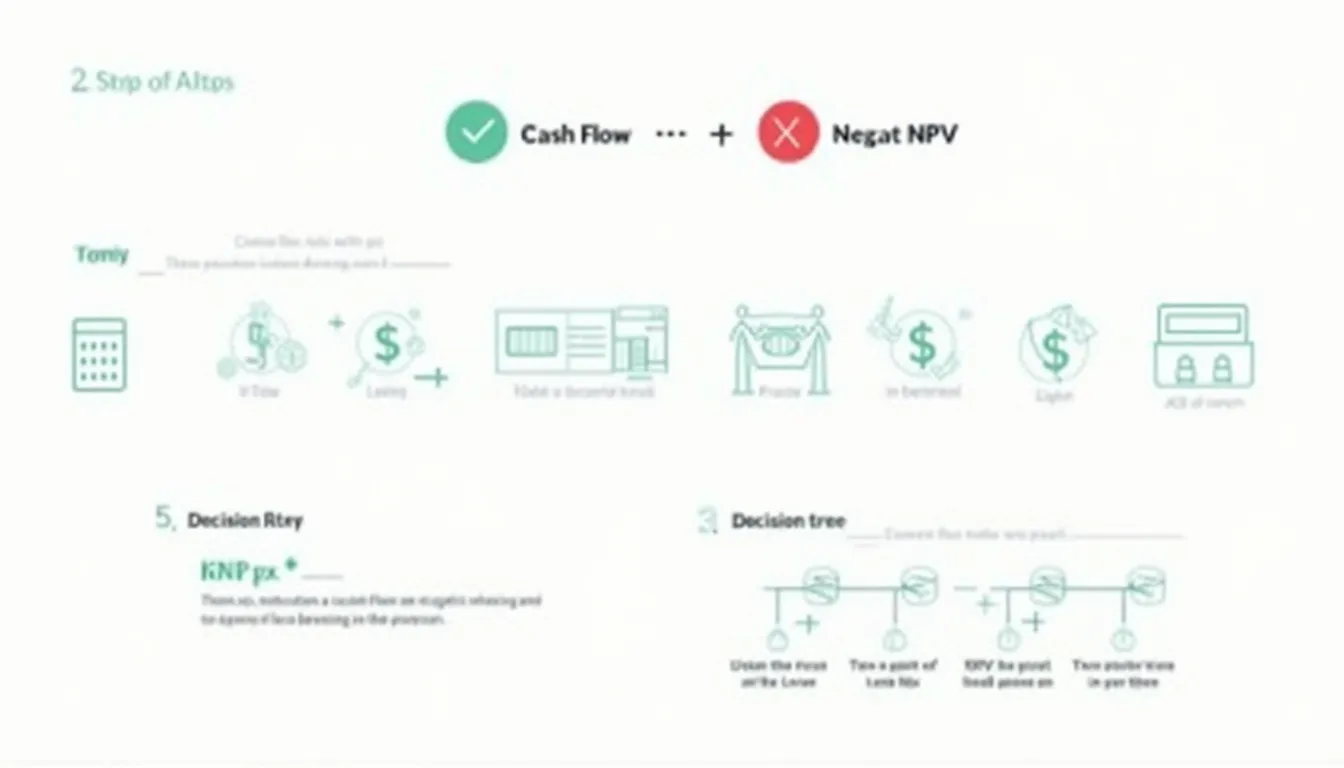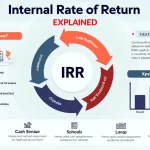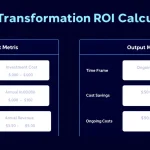Net Present Value Calculator
Is this tool helpful?
How to use the tool
- Initial Investment – type the cash outlay required up front, e.g., 20 000 or 85 000.
- Cash Flows – list expected inflows by period, separated with commas, such as 4 000, 6 000, 7 000 or 10 000, 12 500, 15 000, 17 500.
- Discount Rate (%) – enter the rate reflecting risk and opportunity cost, for example 8 or 10.5.
- Press “Calculate NPV” – the tool subtracts today’s cost from the discounted value of future inflows and shows a green (positive) or red (negative) figure.
Formula behind the button
The calculator applies
$$\text{NPV}= -\text{Initial Investment}+ \sum_{t=1}^{n} \ rac{CF_t}{(1+r)^{t}}$$
where CFt is the cash flow in period t and r is the discount rate expressed as a decimal.
Worked example
- Initial Investment: 15 000
- Cash Flows: 6 000, 7 000, 8 000
- Discount Rate: 8 % (0.08)
Present values:
- Year 1: 6 000 / 1.08 = 5 555.56
- Year 2: 7 000 / 1.08² = 6 003.20
- Year 3: 8 000 / 1.08³ = 6 355.25
Total PV = 17 913.99; NPV = -15 000 + 17 913.99 = 2 913.99. The project adds value.
Quick-Facts
- Median corporate discount rate: 8.6 % for S&P 500 firms (Damodaran, 2023).
- U.S. 30-year Treasury yield averaged 4.3 % in 2023 (U.S. Treasury, 2023).
- GAAP ASC 360 recommends discounted cash-flow tests for impairment (FASB, 2021).
- Capital budgeting studies rank NPV as the “most reliable decision rule” (Brigham & Ehrhardt, 2022).
FAQ
What is Net Present Value?
Net Present Value is the difference between an investment’s cost and the present value of its expected cash inflows; a positive result signals value creation (Investopedia, 2023).
How does the discount rate influence NPV?
Higher rates shrink present values, pushing NPV down; lower rates inflate them, pushing NPV up (Berk & DeMarzo, 2023).
Which discount rate should you select?
Finance texts advise using your project’s weighted average cost of capital; many U.S. firms fall between 6 % and 12 % (Damodaran, 2023).
When is NPV preferable to Internal Rate of Return?
NPV ranks mutually exclusive projects more reliably because it assumes reinvestment at the cost of capital, not at an often unrealistic IRR (Brigham & Ehrhardt, 2022).
Can you apply NPV in personal finance?
Yes—home purchases, education, or retirement projections can be valued by discounting net cash flows with a personal opportunity cost rate (CFI, 2022).
How often should cash-flow forecasts be updated?
Best practice is to revisit assumptions whenever market rates change by 1 percentage point or project scope shifts materially (PwC, 2021).
Does inflation change the calculation?
Use nominal cash flows with a nominal discount rate or real cash flows with a real rate; mixing bases skews NPV (IMF, 2020).
What are the main limits of NPV?
NPV relies on estimated cash flows and a single discount rate—errors in either input can mislead decisions (Investopedia, 2023).
Important Disclaimer
The calculations, results, and content provided by our tools are not guaranteed to be accurate, complete, or reliable. Users are responsible for verifying and interpreting the results. Our content and tools may contain errors, biases, or inconsistencies. Do not enter personal data, sensitive information, or personally identifiable information in our web forms or tools. Such data entry violates our terms of service and may result in unauthorized disclosure to third parties. We reserve the right to save inputs and outputs from our tools for the purposes of error debugging, bias identification, and performance improvement. External companies providing AI models used in our tools may also save and process data in accordance with their own policies. By using our tools, you consent to this data collection and processing. We reserve the right to limit the usage of our tools based on current usability factors.







